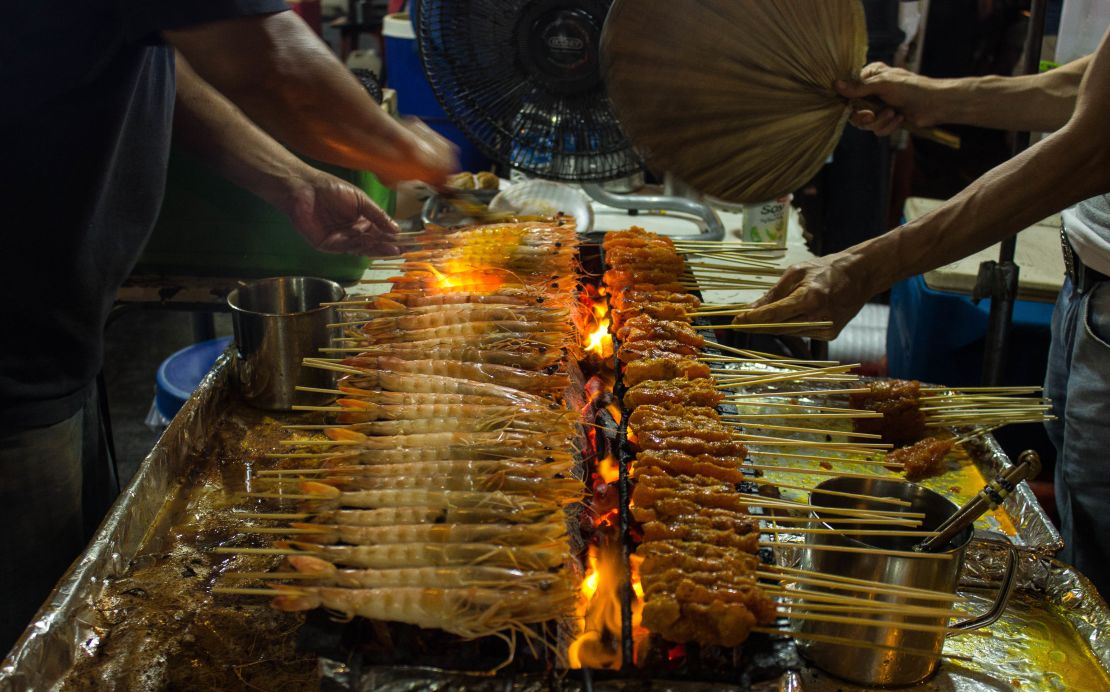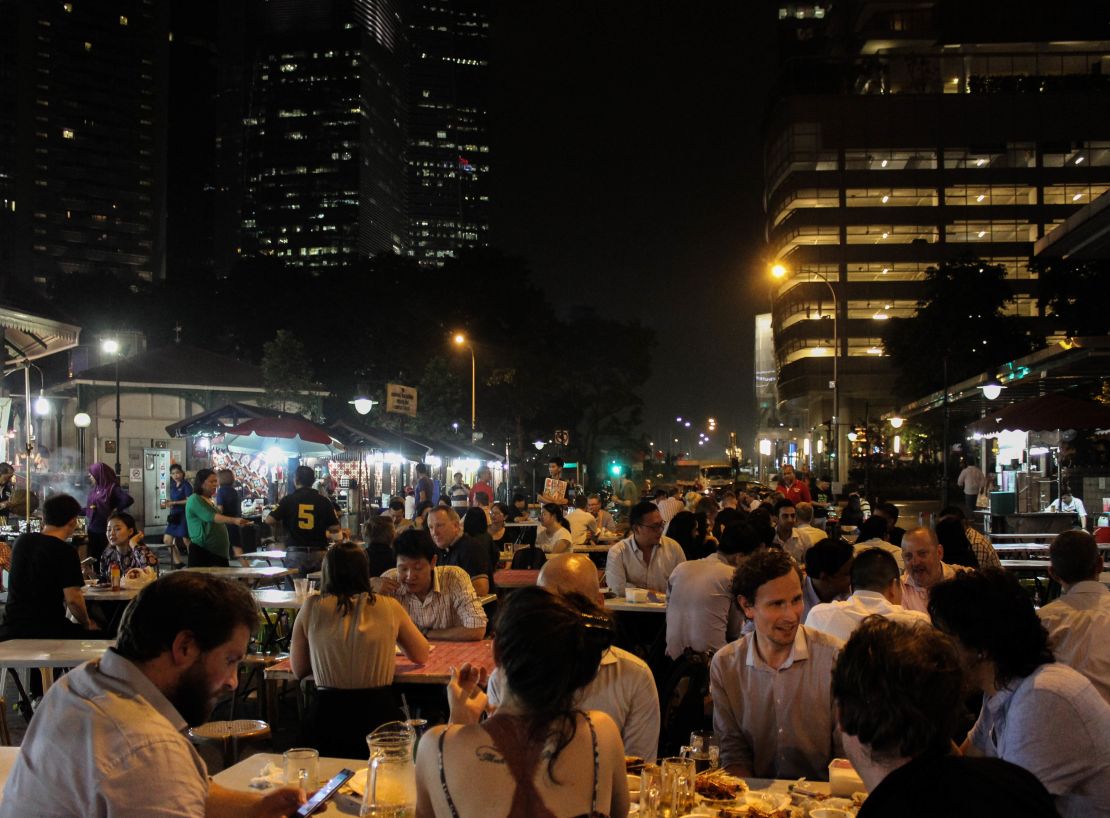Every night at 7 p.m., Singapore’s Boon Tat Street channels the spirit of the 1950s – before the city state’s skyscrapers stole the show – and magically transforms into a street food lover’s paradise.
As the sun goes down, streetlights cast a glow. The road shuts to autos to make way for hawkers, who set up tables and chairs in the middle of the street. The whole production feels choreographed, like a Broadway production. The largest outdoor barbecue in Singapore is about to begin.
Located behind the Lau Pa Sat hawker center, Boon Tat Street – also known as “Satay Street” – centers around 10 hawkers who serve up the grilled sticks of meat in all styles and flavors, alongside delicious dipping sauces.
For a few hours, everything is the way it used to be.
“Its openness, the smell, the smoke rising is free,” Ibrahim Allaudin, a second-generation stall owner, tells CNN. “There’s nothing else like this in Singapore.”
Hawkers innovate to keep Singapore street food tradition alive
How to order

From 7 p.m. to midnight, you can choose from an array of satay platters for SG$30-40 ($20-30).
You’ll find mixed sets of skewered shrimp, chicken, beef, mutton and even duck – but no pork, as the food is halal-friendly. Your clothes should still smell of smoke the next day, if you’re doing it right.
“I’ve eaten at every satay corner from here to Indonesia,” says vendor Ainon Hussin. “On Satay Street (in Singapore), different stalls offer different tastes it depends on what you prefer. I like to focus on the basics, like the chili spices.”
It’s hard to go wrong at any of these stalls, but we’d put our money on stall No. 6. The meat is crispy on the outside, tender on the inside, and the caramelized sauces melt in your mouth like warm honey.
Meanwhile, stall No. 10 specializes in plump prawns, and stalls 3 and 4 serve up satay with a curry kick. Jefri Jumein – third-generation owner of multiple stalls including No. 10 – caters to the health conscious.
“We don’t use MSG and we have healthy choices like mushrooms, while still using traditional spices like coriander and turmeric.”
And for big flavor? Allaudin says his stall has extra “oompf.”
“We don’t say something is delicious, we say it has power,” he says. “That’s why I call my stall, Satay Power.”
No matter where you dine, you’ve never feasted with 50 strangers like this before. As the Tiger beer flows and satay sizzles, the experience is like a family affair, where everyone feels at home.
“This is the only satay club in Singapore, and it’s like the golden days,” says vendor Hussin.
Singapore foodie KF Seetoh shares his favorite restaurants
A traditional start

The taste of grilled satay recalls a time before Singapore’s rapid modernization.
In the 1940s, the thriving scene evolved into “Satay Clubs” – or large gatherings of satay sellers – around the city.
Indeed the importance of Satay Street, says Allaudin, is that it brings back a bygone era, when street food and, satay in particular, was ubiquitous.
“You used to be able to find satay anywhere and now it’s only in limited places,” he says.
The traveling satay man, a street hawker who prepared his delicacy with a portable charcoal grill, was a familiar sight in Singapore up to the late 1970s, according to Singapore’s National Library Board.
“In the old days – before all these skyscrapers – satay sellers would cycle to your home and cook on the back of their bicycles,” says Allaudin, recalling his first satay memory.
“When I was a kid and they would come by, my grandparents home … my cousins and I would shout and scream and go crazy. It made me happy and it brings back fond childhood memories. It’s a very family-oriented thing.”
The firefighter-turned-satay vendor learned the trade from his father-in-law. “I used to put out fires, now I start them,” Allaudin says with a laugh.
The classic Singapore Sling gets a makeover
Reason to celebrate
Singapore is boiling with decades-long stories of diversity and culture.
Located between Malaysia and Indonesia, it was a British colony in the 1800s. Immigrants arrived from over Asia to grow the then-small economy, transforming it into the diverse city that stands today.
Culinary influences arrived from all over Asia, including China, Malaysia, Indonesia and India. But over the years, as the city modernized, age-old recipes have disappeared. Between 1950 and 1986, vendors scattered across the city to settle into one of the dozens of hawker centers that stand today.
Singapore’s National Environment Agency – an organization responsible for the food retail industry – shifted kitchens across the Lion City to address traffic, environmental and hygiene concerns.
This makes Satay Street, introduced in 1996, a rare find.
“Satay is basically a celebratory food,” says Jumein. “Back in the day, it was only eaten when you got a bonus or it was payday.”






